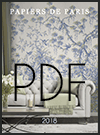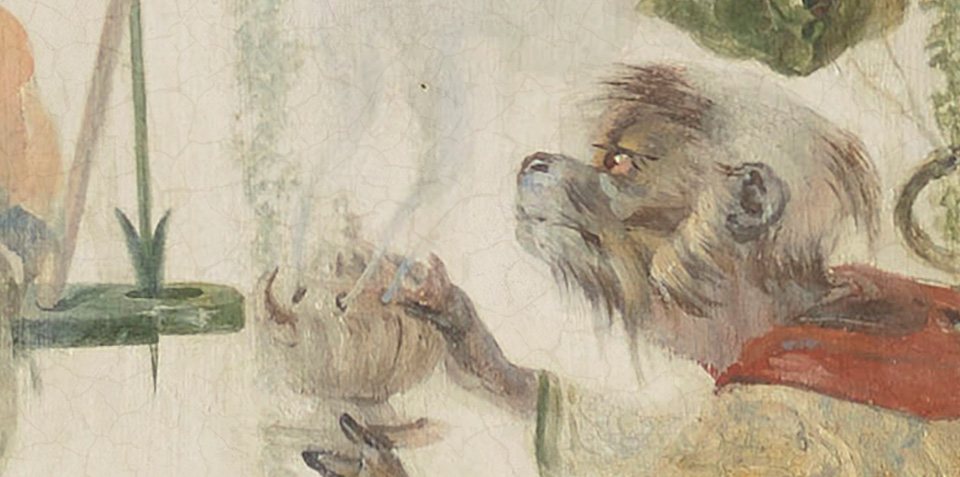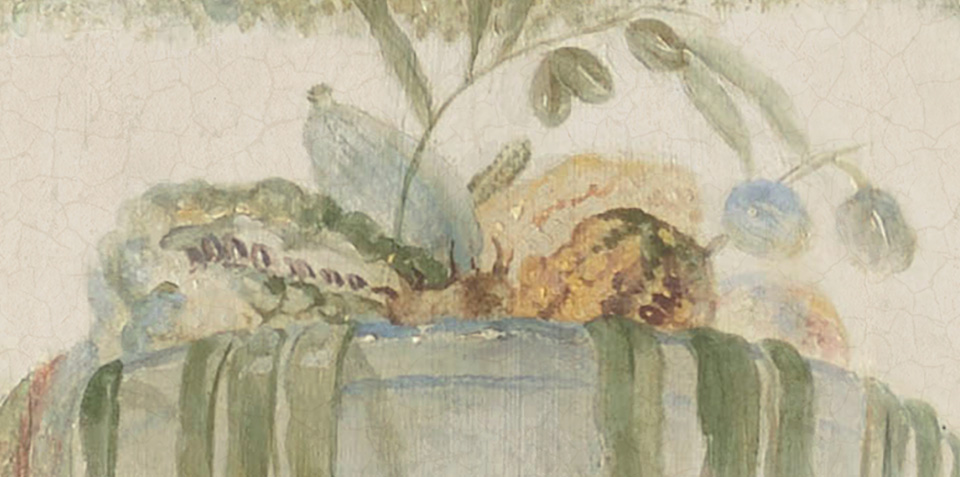
PDF Catalog
Singerie Panels No. 1/7 - Decorative PanelREFERENCE SINGERIE-PANEL-1 Themes: XVIIIth Size : 81 x 36 inch
Wallpaper featuring monkeys from the Château de Chantilly. It consists of four large panels representing the four corners of the world and the five senses. These panels were created by Huet Christophe (1700-1759). Panel No. 1 is an allegory of Europe.
Provenance: Chantilly, Musée Condé, France.
Part of a series of 7 panels. Each panel can be ordered separately
170g non-woven paper - Made in France |
| Christophe Huet and His Singerie Decorations |
|---|
|
Christophe Huet (1700-1759) was a French painter and ornamental artist in the 18th century. Trained in his father's workshop, he developed a personal style that earned him commissions from the high aristocracy. His specialty? Singeries, decorative schemes featuring monkeys in human attitudes that were all the rage during the Rococo period. Huet left his mark on several prestigious residences. At the Château de Champs-sur-Marne, he created the famous Chinese salon in 1748, masterfully blending chinoiserie and singerie. At the Hôtel de Rohan in Paris, he decorated the Monkey Cabinet around 1749-1752, a particularly refined ensemble. But it is at the Château de Chantilly that he perhaps created his most accomplished work: the Grande Singerie (1735) and the Petite Singerie, two salons entirely devoted to these playful creatures. Huet displays all his talent there, depicting monkeys as musicians, scholars, or engaged in various aristocratic activities. His work is characterized by light compositions full of humor and remarkable technical execution that combines precision of detail with overall harmony. |
 Detail of Singerie after Christophe Huet - Photo: Grand Palais RMN (Domaine de Chantilly) - Michel Urtado Reproduction on non-woven paper -
Detail of Singerie after Christophe Huet - Photo: Grand Palais RMN (Domaine de Chantilly) - Michel Urtado Reproduction on non-woven paper -
|
| The History of Château de Chantilly |
|
The Château de Chantilly, in the Oise region, has a long history dating back to the Middle Ages. Property of great families such as the Montmorency and then the Condé, it reached its peak in the 18th century. It was Louis-Henri de Bourbon-Condé who called upon Christophe Huet to decorate some of his apartments, marking the château's artistic golden age. In the 19th century, Henri d'Orléans, Duke of Aumale, rebuilt part of the château and assembled an exceptional art collection there. In 1886, he bequeathed the entire estate to the Institut de France, ensuring its preservation. Today, the château houses the Condé Museum with its remarkable collection of old master paintings, second in France only to the Louvre. |
 Detail of Singerie after Christophe Huet - Photo: Grand Palais RMN (Domaine de Chantilly) - Michel Urtado Reproduction on non-woven paper -
Detail of Singerie after Christophe Huet - Photo: Grand Palais RMN (Domaine de Chantilly) - Michel Urtado Reproduction on non-woven paper -
|
| 18th Century Singerie Decoration |
|
Singeries are a decorative genre typically French from the 18th century in which monkeys imitate humans in their daily activities. At Chantilly, these decorations perfectly illustrate the Rococo spirit and humor of the era. We see monkeys playing cards, making music, gardening, or holding salon. These compositions had a satirical dimension: by showing monkeys copying aristocrats, artists offered an amusing and acceptable social critique. The Chantilly panels are distinguished by their delicacy—soft colors, balanced compositions, a mix of grotesque, floral, and architectural elements. Each scene tells a little story, with that blend of sophistication and lightness that characterizes French decorative art of the Enlightenment. |
